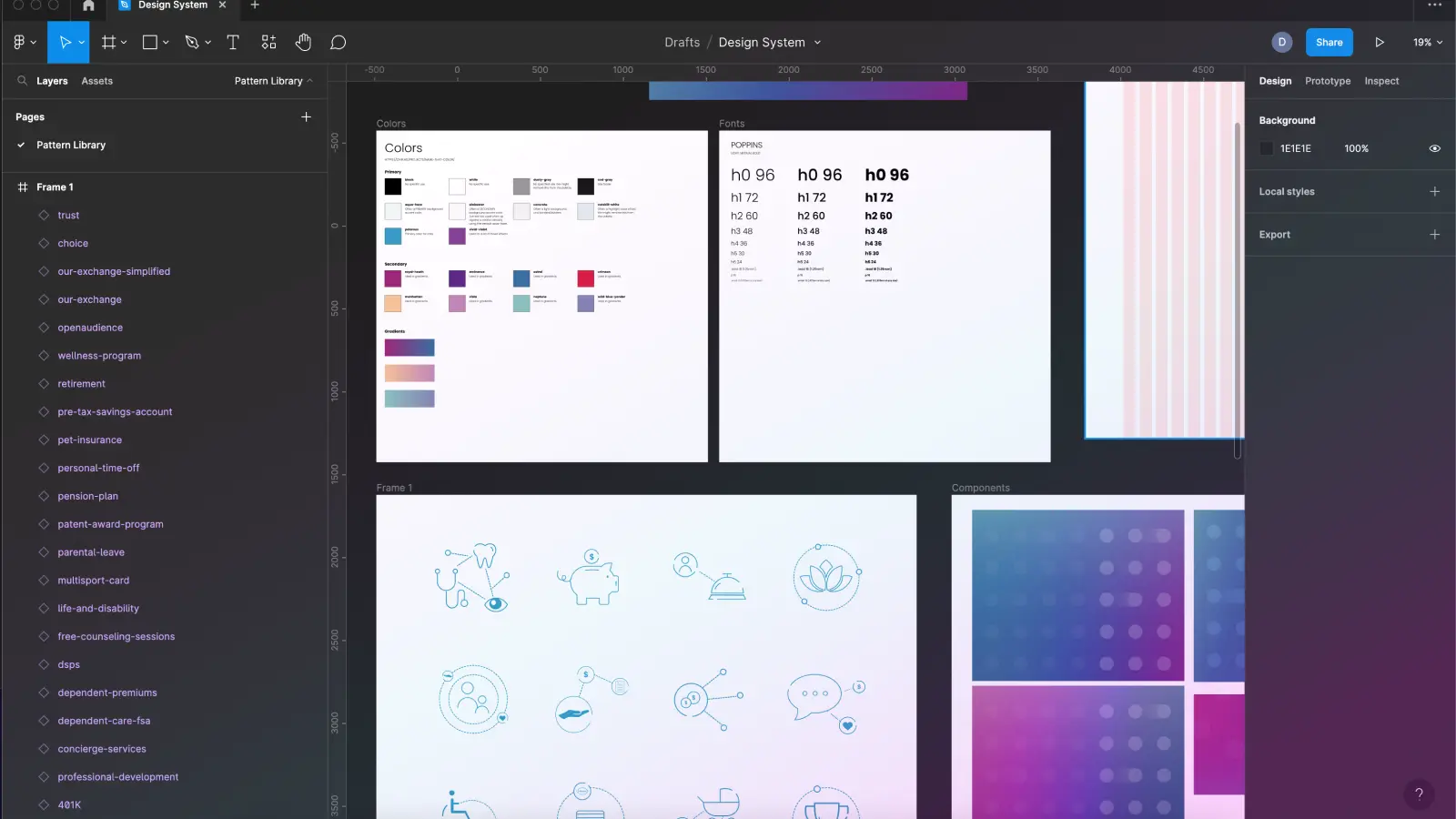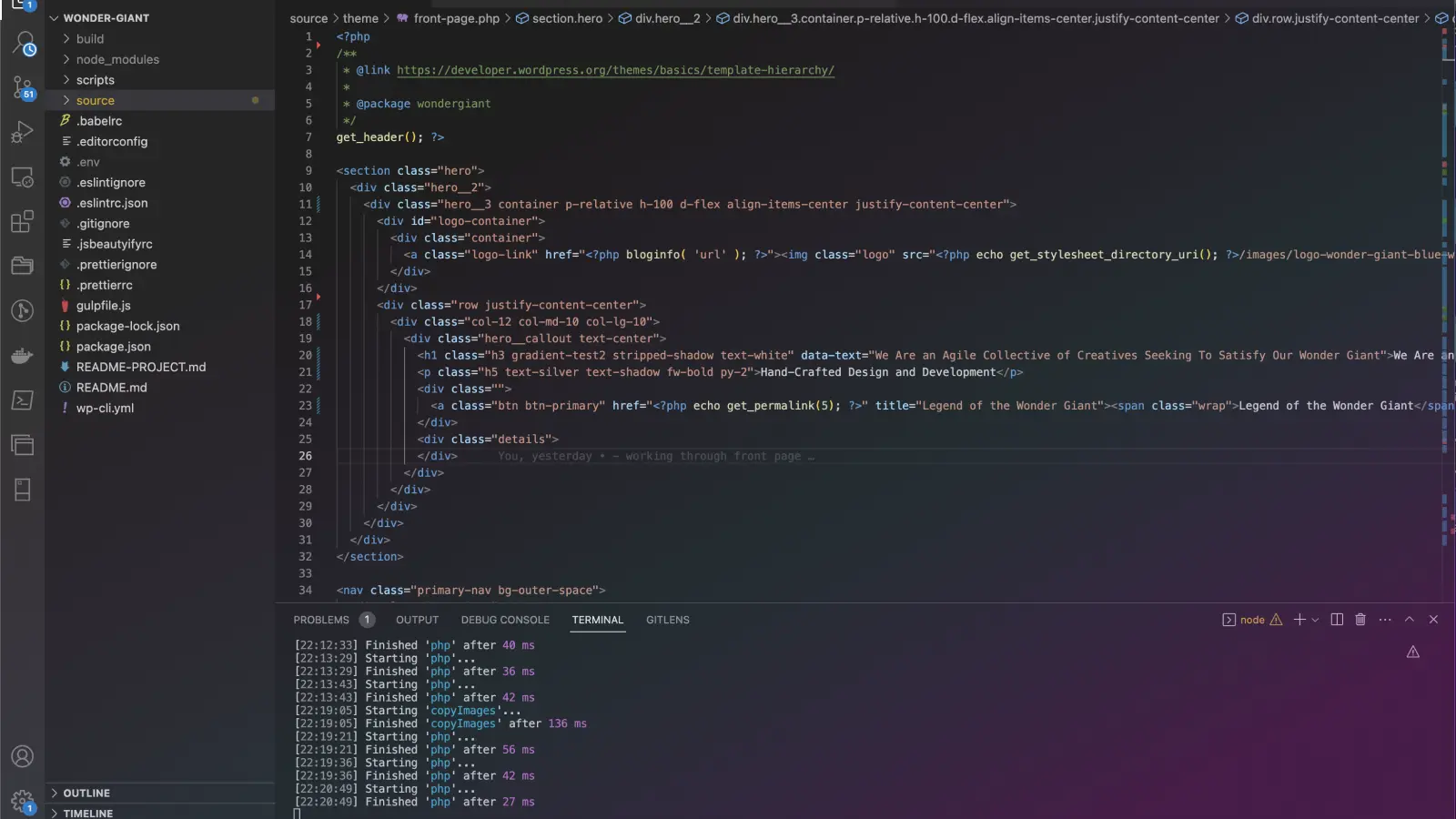
Design Systems
We want to create design system for you (in Figma) so your brand is organized, consistent, and collaboration is simple.
Handcrafted Design and Development
Seriously though, we are looking for long-term partners. We don't believe in 'bosses'. Or drag‑and‑drop sites. Or pre‑built themes. We are looking for partners that share our vision. We want to look forward to our meetings. We strive to create a collaborative environment where everyone is empowered to make decisions and contribute to the success of the projects. We want to create design systems, and write code, that allows us to support you for years to come.
[email protected]
We want to create design system for you (in Figma) so your brand is organized, consistent, and collaboration is simple.

We want to hand-code your site (supported by a WordPress back-end) so you aren't limited by drag‑and‑drop tools.

We want to manage your hosting, security, and updates (on our proven technology stack) so you're available to your audience.
Well defined colors, typography, iconography, and reusable components all contribute to the success of the design, and a smooth transition from design to code. By using Figma to create a Design System we create a cohesive and consistent brand identity that translates into clean, maintainable code.
This saves countless time in the long-run because having a well defined Design System means all future designs can start off without having to redefine, or track down guidelines. No more guessing "is this the right blue". Everything is stored in one, cloud-based, location and turned into 'Library Variables' so they can be easily used throughout every design.
Another benefit of our Design System process is our cloud-based collaboration. Click on anything in the design and leave a note for us, or thoughts for the future. Want to get a second opinion from a coworker or friend? We can easily provide a URL for them to preview the designs.
By using our Design Systems to control colors, typography, and components, we can help establish a strong and cohesive brand identity that is both visually appealing and functional (for you and us).
Using a modern web development workflow offers several benefits for both the agency and the client.
By storing all our code in a GIT repository we are able to roll back to old code, reference code that has since been removed, and work on major features over weeks/months of time without interfering with the live site.
For 6 years we've been developing, and improving upon, a development workflow we call Wonderpress. It allows our developers to get set up with a local copy of your site to develop, test, and keep in sync with your live and staging sites.
Storing code in a Git Repository allows for multiple developers to work on "branches" of the project at the same time, and then merge it all together as features are perfected.
Working with code branches makes it easier to modify the project as requirements change, or to add new features as the business grows. This means that the website or application can be more easily adapted to changing circumstances, making it a more long-term solution.
By hand-coding every aspect of your site you are getting exactly the features you need, and none of the ones you don't. This means less bloat, less software entropy, and assets that are exactly modified to balance quality and page speed. This kind of attention to detail can significantly improve the performance and speed of the final product.
This happens because software is constantly changing, both in terms of the code itself and the environments it runs in. As these changes occur, it can become harder to maintain and update the software, leading to errors, bugs, and other issues.
We like to host and manage our client sites using our "Pro Management" service which is a combination of hard costs, and labor costs related to hosting, security, offline backups, uptime monitoring, WordPress Core and Plugin updates, and some shared licenses.

They are excellent partners who are able to provide creative direction and strategic thinking as well as development services, always communicating well and responding extremely quickly to any requests.

Buttoned-up timely, accurate, and professional are just a few of the words I would use to describe Wonder Giant.

The team is overall skilled, but their ability to communicate and make things easily understandable in a high-pressure, complex environment, is the main reason I would engage them again.

Wonder Giant's web and logo design were invaluable to Studio DelCorpo. The logo that Wonder Giant designed has been forever connected with our company and will live on, in perpetuity.

A unique combination of exceptional user experience, business acumen, client service and creativity.
We are a collective of creatives. No full-time staff or central office. We approach each project based on requirements, talent, and team chemistry.





We are so proud to showcase the achievements of our clients. We’ve worked with clients from a wide array of industries, helping them achieve their goals and showcase their brand in the best light.
We look on in pride as we’ve seen clients reach milestones and receive recognition over the years, from winning awards in their industries, to being featured in major publications. We are honored to have played even a part in their success.
A partner for over 4 years (so far)
OpenX is a global technology company that provides digital advertising solutions to publishers and advertisers. Our first order of business was to rebuild their site, and their blog. Both had suffered years of technical debt having had changed agencies multiple times. We tore it all down to just the content and recoded both sites from scratch. Since then we've helped with multiple other side project sites, built their Design System in Figma, and helped create efficiency systems for producing other marketing materials.
OpenX is a fairly large company, so we have had to pleasure to work with many people across the organization. Everyone is so uniquely talented and we've loved working with a team that brings so many strengths and is also appreciative of all the ways we've been able to help.

A partner for over 10 years (so far)
The Wonderment is a social platform and community for people to connect, collaborate, and create positive change in the world. The site is designed to inspire and empower people to use their imagination, creativity, and problem-solving skills to tackle real-world issues, such as poverty, hunger, and inequality. The platform features interactive tools and resources that encourage collaboration, learning, and sharing, as well as a global network of like-minded individuals who are committed to making a difference.
Working with the team at Kidnected World has been nothing short of a dream. This non-profit organization is run by only a handful of people, but you would never know it judging by the goals and impact they have had. We've had the priviledge of being their exclusive design and development team for so many years that we've gotten to help the platform morph and grow in multiple directions.

A partner for 2 years (so far)
Partnering with Scopo Design has been a wonderful experience as the team chemistry is so positive and appreciative. Magic happens when you can partner with a team that has such similar philosphies, but yet in an entirely different industry.

A partner for 4 years
Method Procurement is a cloud-based solution built for dental professionals to make ordering dental supplies a breeze. This was such a fun brand to work with because their designs had a nice balance between visuals that were achieveable yet also challenged the expectations of a grid system.
Working with the leadership at Method was always a pleasure, and our meetings felt more like catching up with an industry friend.

A partner for over 4 years (so far)
Maple & Ash is a high-end steak restaurant famous for their 'I DON’T GIVE A F*@K' menu item where everything is taken care of for you. The brand is meant to feel luxurious, natural, and approachable.
We've helped design and develop multiple restaurant brands for Maple Hospitality Group (formerly known as What If Syndicate) and it is always a pleasure partnering with them.

A partner for over 4 years (so far)
POV by OpenX is a unique alternative to a traditional blog. In fact it can hardly be considered a blog; It is a curated selection of expert business and marketing minds sharing their knowledge on the most complex and contested topics in digital advertising. Instead of releasing traditional blog posts, it focuses on creating 'Issues' with multiple articles that each get their own unique illustrations and layout styles.
This was a unique challenge from a Design System perspective because instead of having one global design system for the site, it also has to support a unique system for each issue, and further a unique system for each individual article. We solved this requirement by designing a sort of waterfall design system that established a global system for use anywhere, and an isolated design system for each issue/article.

A partner for over 4 years (so far)
Monarch is a wood-fired, modern Italian restaurant serving handmade pastas, steaks and fresh seafood. Similar in stature to the Maple & Ash brand, but with more emphasis on ornate design elements to make the website feel as elegant as the restaurant decor. Monarch was imagined by Two-Michelin Star Chef, Danny Grant, and brought to life by the Maple Hospitality Group (formerly known as What If Syndicate).
Monarch is one of eight restaurant brands we have helped design and develop with Maple Hospitality Group.

A partner for over 8 years (so far)
One Floor Up is an in-house video production team. They do live-action videos, virtual events, animated video, commercials and more. The quality of their work is amazing, and it's so impressive to see the range of video concepts they are able to produce.
We've worked with One Floor Up for over 8 years, initially doing their site development, then doing a light redesign and redevelopment, and ongoing improvements.

A partner for over 4 years (so far)
MT2030 is a non-profit with a mission to build a movement of mountain communities committed to net zero carbon emissions. They hold conferences and workshops to help guide leaders on actionable ways to make carbon-related changes. They work to implement ideas to meet the zero-carbon commitment with local government elected officials, staff and sustainability teams, ski resorts, and business and community leaders.
We like working with goal-oriented non-profits like MT2030 because even non-profits should have an online presence that reflects the quality of their organization.

A partner for over 4 years (so far)
Located on the 50th floor of The National, Kessaku is a sushi and sake lounge serving Dallas’ freshest, globally sourced fish and seafood. A creation of Chef Danny Grant and Chef Hari Chan, the menu centers around simple yet elegant nigiri, sashimi and rolls and a world-class collection of sake and Japanese Whiskey.
Kessaku is one of many of the restaurant brands we helped design and develop for the Maple Hospitality Group (formerly known as What If Syndicate).

A partner for over 6 years (so far)
SIA is the trade association of the winter outdoor industry. SIA and its members spot trends that matter, facilitate industry-wide strategy and innovate to ensure the winter outdoors thrives for future generations.
SIA is another non-profit we love being partners with because they are so dedicated to making a positive change that it is hard to not be inspired while working on their brand.















Our team is designed to specifically fit each project. This allows us to have the appropriate skills represented for every project, and keeps overhead low.

The ‘9 to 5’ has its place, but often doesn’t compliment the working style of creatives and developers. Our Giants are left to work their personal peak hours leading to better projects for you, and happier people.

Don’t get us wrong, meetings can be an important part of the process, but we believe they should be reserved for the times when their benefits far outweigh their distractive nature. This means we spend more time focused on what we love (your projects).

Everyone has their own Wonder Giant, including our clients. Some are bigger than others, it all depends how much attention you give your Giant. Our goal is to help our clients find their Giants, while honing our own skills to appease our own Wonder Giants.
Reach out and we'll see if it's a fit for everyone.
[email protected]